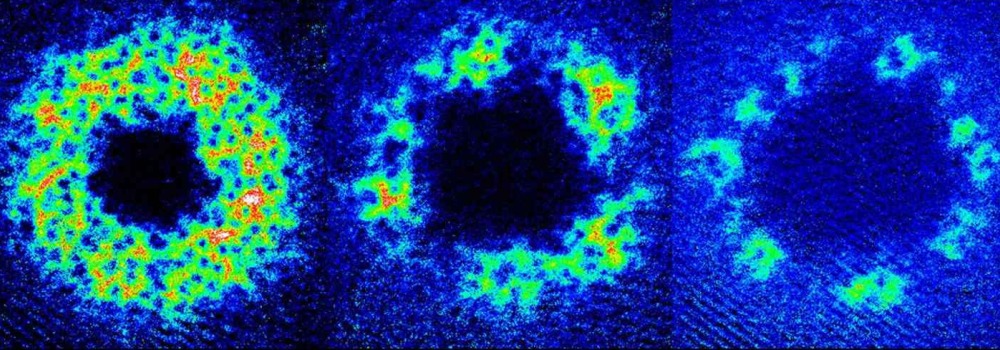In this part (it will be a little bit technical) you will see how to read-off information about the perturbative behavior of the elementary excitation, and a glimpse of a non-perturbative configuration with a small calculation to show off what it means by a non-perturbative phenomenon. Consider a 3D weekly interacting Bose gas described by the following Halmintonian (the mass, chemical potential and the coupling strength are positive) with the quantized oscillatory modes of the complex field:
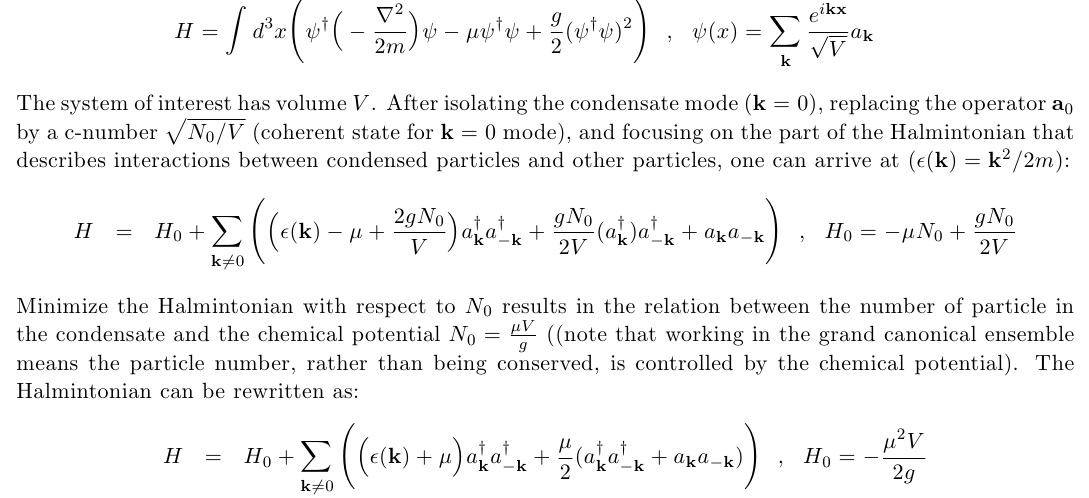
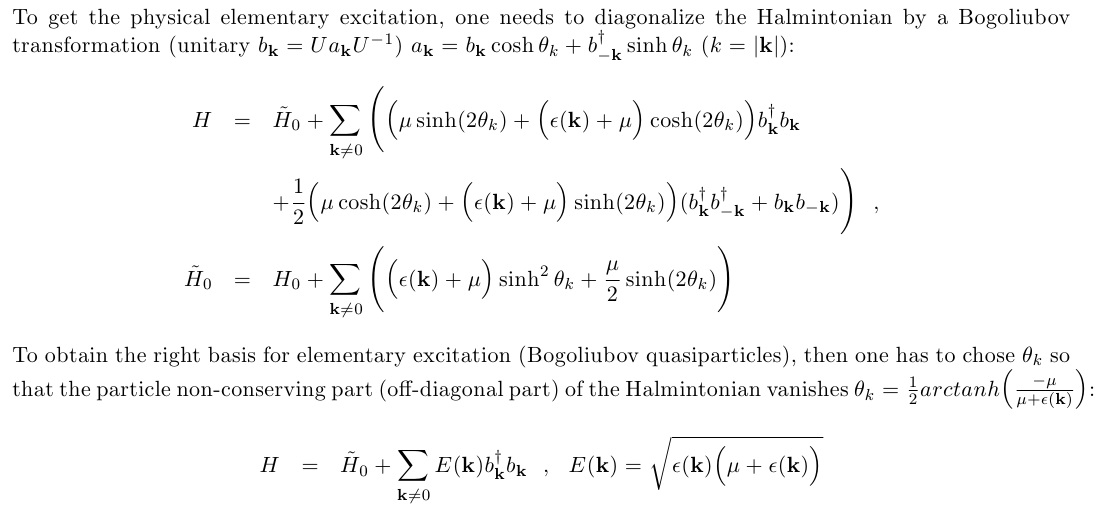
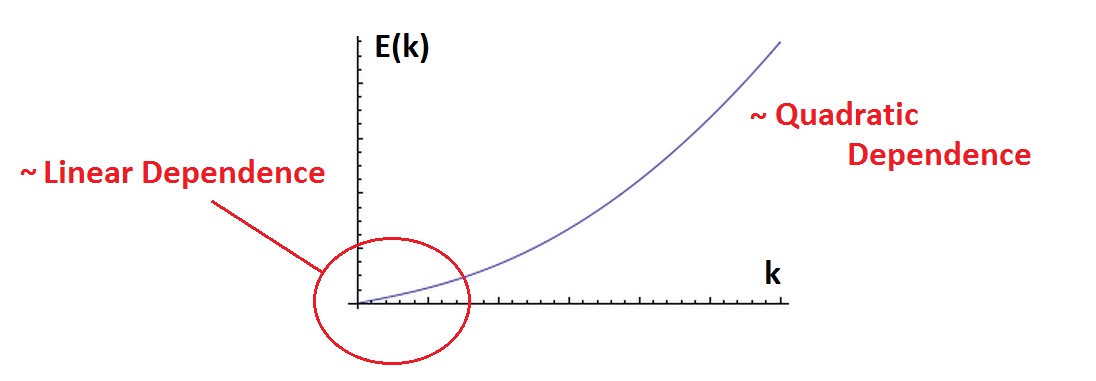
Each elementary contributes a small energy to the fluctuation energy, on top of the ground energy. The dispersion relation of these excitation is given from the above plot. The same procedure can be applied on top of any other background (in this case, the background is the ground configuration) to read-off the perturbative behavior.
Let's move on to the non-perturbation aspect of this theory. For simplification, look at this system from a classical point of view, as the Halmintonian now becomes the classical energy as the operator complex field goes to a functional complex field:
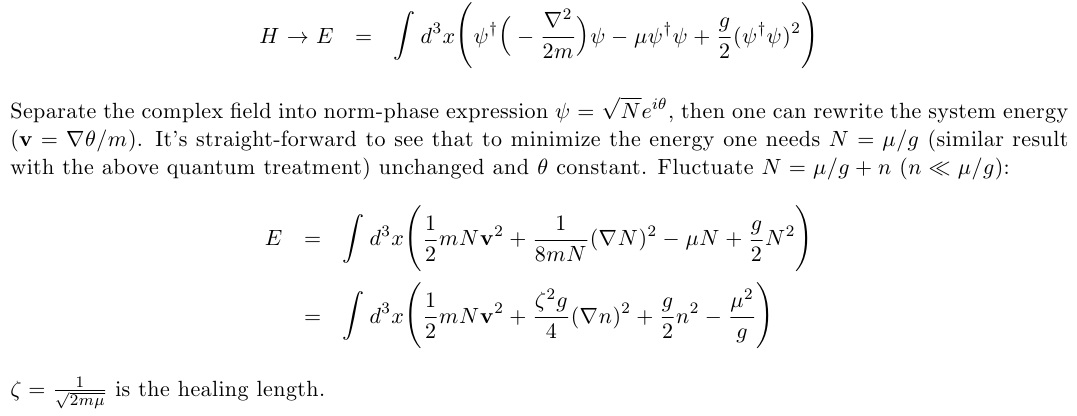
Quantumly, one needs more work to show that the norm for the field value is "locked" at a fixed value at long length scale (small energy scale) , but with classical treatment one can easily show that at that long wavelength limit the energy contribution from the position-dependence part of the norm-field can be neglected:
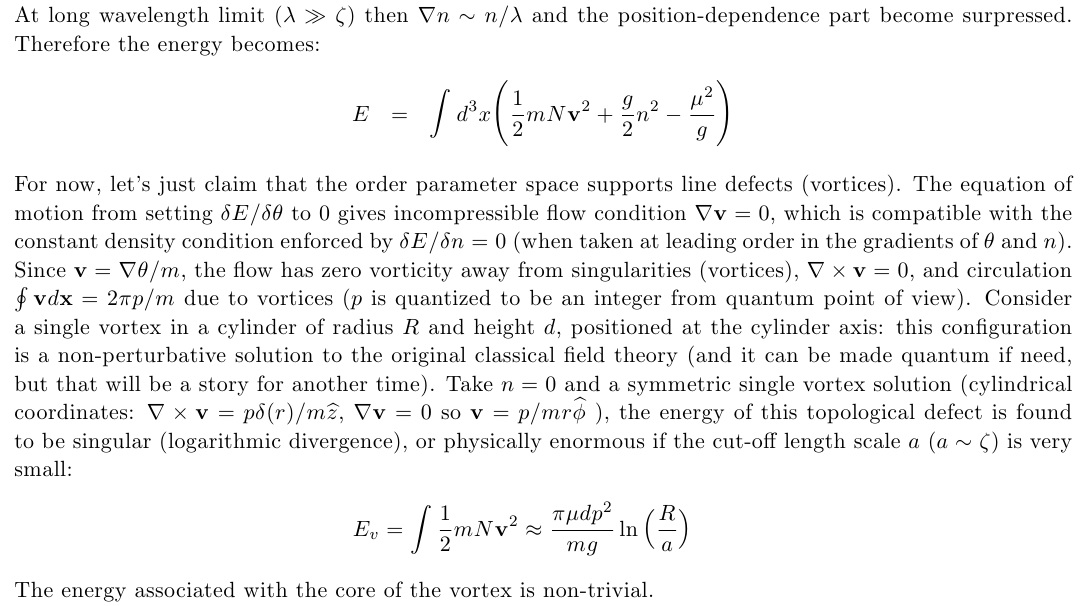
This calculation gives a glimpse about the huge effects non-perturbative aspects can influence the system.
